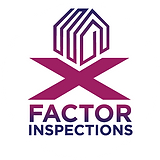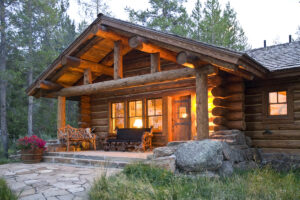 Log Cabin homes are beautiful but not very common, therefore inspecting them is a specialty. A log cabin inspection has similarities to home inspections and home warranty inspections, but it also has unique characteristics that require knowledge and experience to ensure the log cabin home inspection is as thorough as it can be. This article compares a pre-listing log cabin home inspection report the seller had available to what I feel are minimum inspection methods that should appear in any report of a log cabin home inspection. This is not just any home warranty inspection.
Log Cabin homes are beautiful but not very common, therefore inspecting them is a specialty. A log cabin inspection has similarities to home inspections and home warranty inspections, but it also has unique characteristics that require knowledge and experience to ensure the log cabin home inspection is as thorough as it can be. This article compares a pre-listing log cabin home inspection report the seller had available to what I feel are minimum inspection methods that should appear in any report of a log cabin home inspection. This is not just any home warranty inspection.
Whether it’s a new home inspection or a warranty home inspection, Familiarity with how log homes are built and how the log components age is crucial in making observations as an inspector. At the minimum an inspector should:
- Comment on the age and quality of the “Chinking.” Chinking is the material used to fill the small gaps between the logs. The small gaps are “chinks.” There are many different generations and effective qualities of chinking material. Some have elastic properties while others are more rigid.
- Comment on the natural “checking” that occurs in log components. As these components dry and shrink, long cracks and splits can open in the log. Alarming yes, but naturally occurring, and they do require monitoring along with maintenance and repair.
- Use a form of resonance testing using acoustic methods to check butt and pass ends – the exposed ends of the logs. An experienced inspector can use acoustics to help gather information about how the log ends are performing exposed to the elements. When the density of wood changes so does its acoustics. Those acoustics can tell you if a log has wood destroying organism (WDO) concerns.
- Usage of a large garden sprayer. With this they can spray large sections of all the exterior log walls to determine if the wood is repelling moisture or absorbing it. This is a great indicator on how well the logs have been preserved and/or maintained.
- At the minimum, comment on log ends exposed to the exterior and whether butt end joints were used extensively for long spans and within walls.
- Employ regular home inspection methods like their knowledge of WDOs (as most older log homes have beetle emergence holes), probing the wood, moisture meter readings, and even thermal imaging, if available.
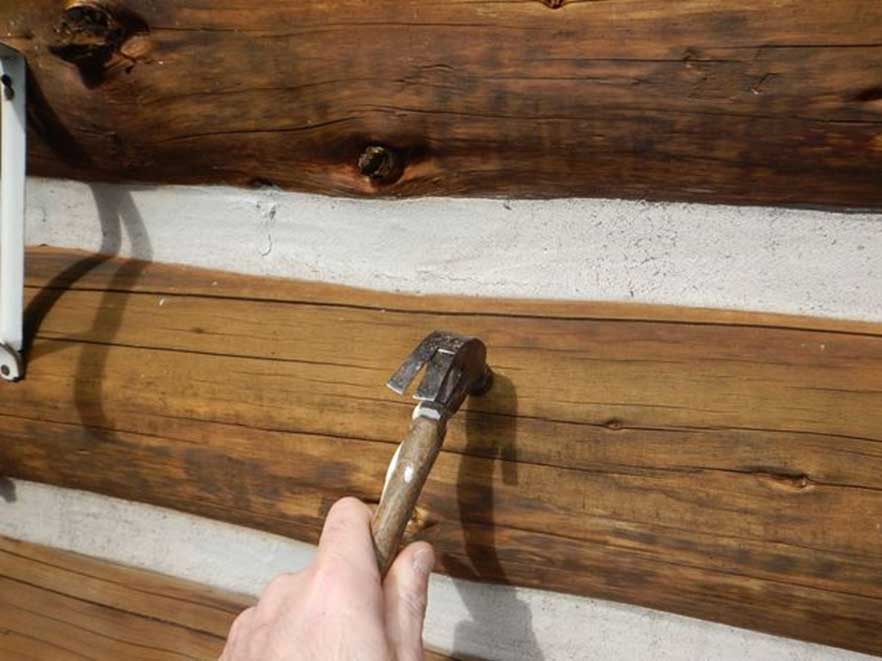
Resonance testing of the wood with a wooden shafted hammer to feel and hear feedback in order to help determine condition and density of log components.
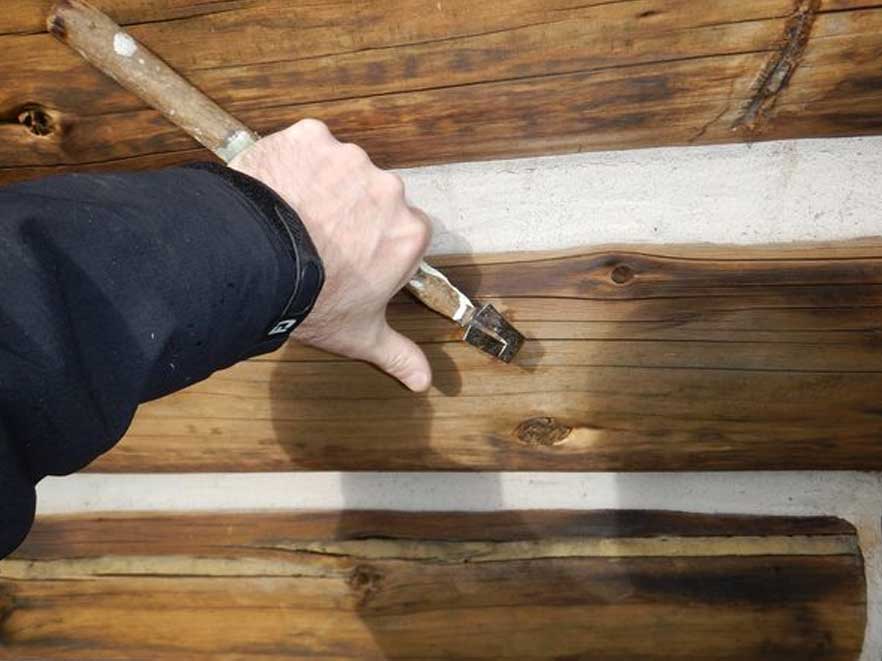
Sound and feel of woods that have the onset of WDO will have significantly different feedback.
Some inspectors who regularly perform log home inspections have coring bits where they can take core samples of suspected bad logs. These can be useful, but in my opinion, this type of specialty testing should be conducted well after the minimum standards described above have been exhausted. Destructive testing should only be used when trying to determine the severity of problems or damage already identified by standard methods. By the time core samples are required there were likely definitive signs of failing well before getting to that point.
Log homes are unique and should be inspected as such. Ensure your inspector has a sound understanding of the dynamics of log cabin home inspection. It is also a great idea to perform your own warranty home inspection if you own a log home so you can see what type of maintenance can be performed to ensure it performs as it should over the years.
Home Inspection Warranty
Home Warranty Inspection
New Home Warranty Inspection
Home Warranty Home Inspection
Warranty Home Inspection
Log Cabin Home Inspection
Log Cabin Inspection
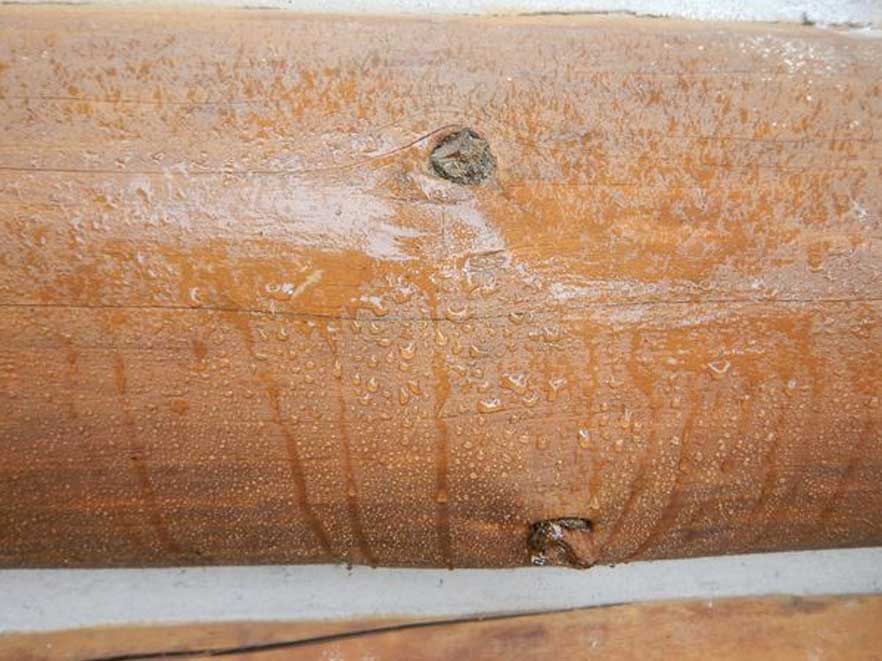
Use of a water spraying to determine where the log components are still resisting water absorption
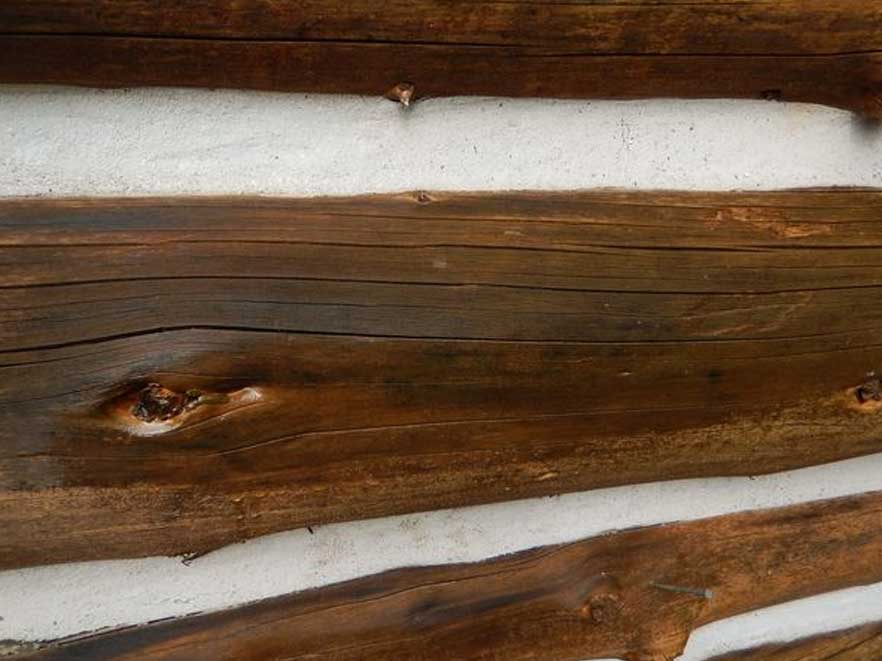
Examples when log components are no longer resisting moisture absorption.
